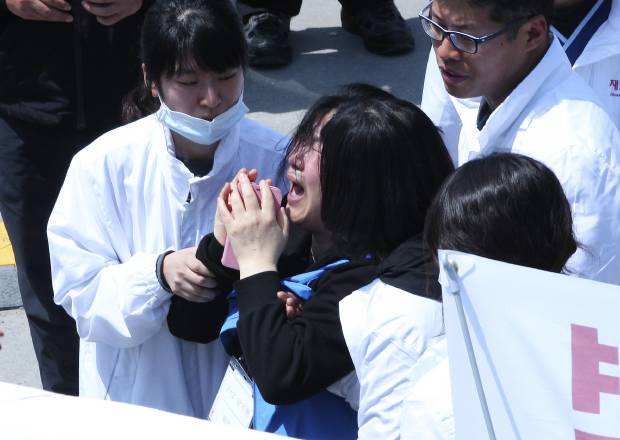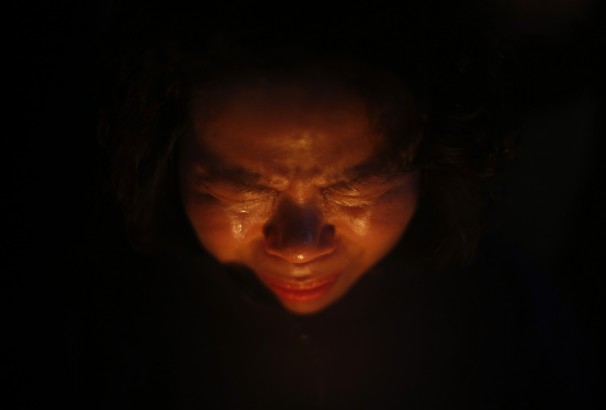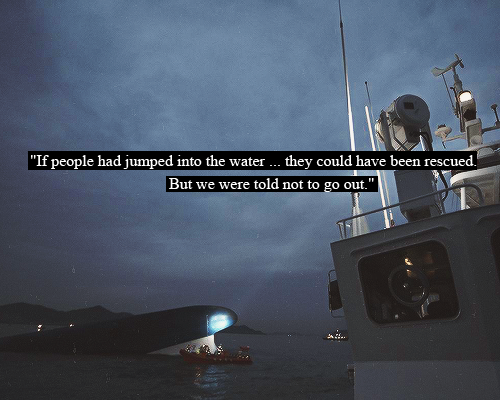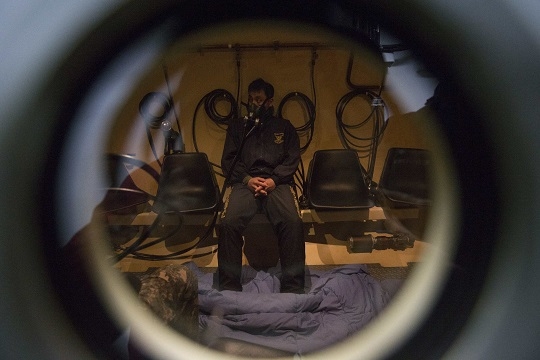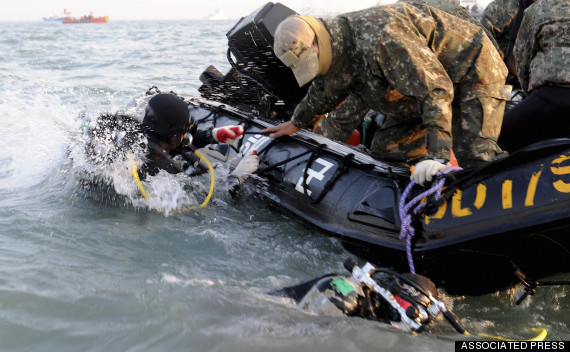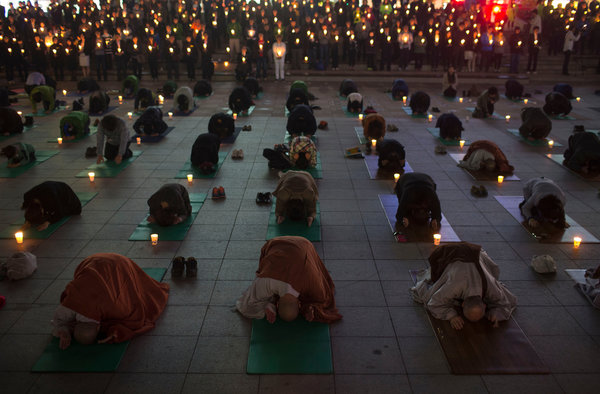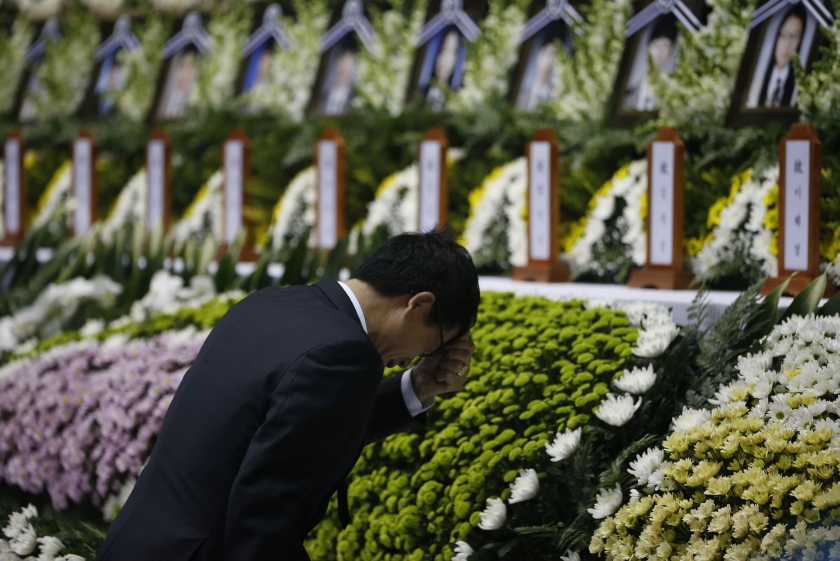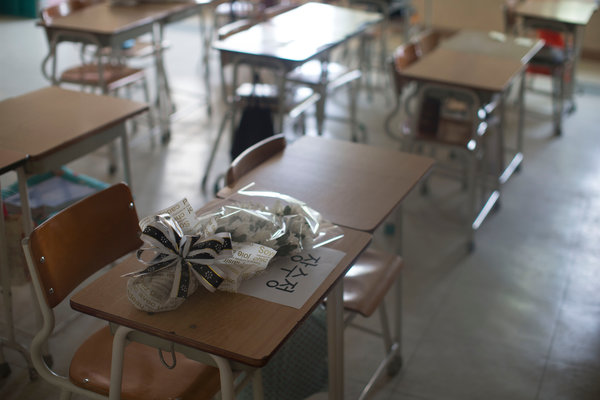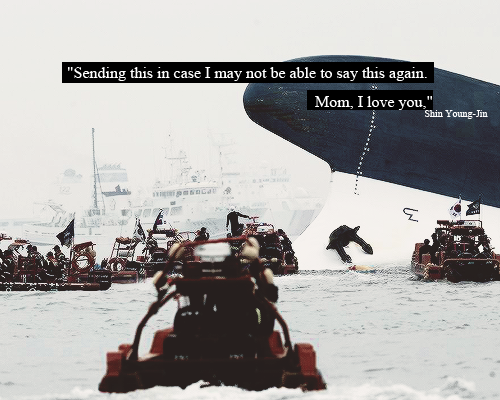Children's Corpses Reveal Horrifying Last Moments Onboard Sinking Sewol Ship
Most of the bodies found in the last two days have had broken fingers, as the children are believed to have tried to climb walls or floors in their last minutes.
A mother of a passenger aboard the sunken Sewol ferry cries after confirming her daughter's name on the list of the victims found dead at a port in Jindo, South Korea
The heartbreaking details of the final moments suffered by the school children on the Sewol ferry reveal many of the children who died broke their fingers because they were trying so desperately to escape
A woman cries while praying during a candlelight vigil in Ansan, to commemorate the victims of capsized passenger ship Sewol and to wish for the safe return of missing passengers
Image via washingtonpost.comMany of the children's bodies recovered from the sunken South Korea ferry in the past two days had broken fingers, according to reports - suggesting the victims had frantically tried to climb walls or floors to escape in their final moments.
Many of the children were ordered to remain in the cabins and wait for a rescue that would never come
Survivors said most of the 325 second-year students on board for a class trip were trapped inside after the crew repeatedly urged them to stay where they were even though the ship was badly listing. Most of the crew members, however, were among the first to flee the ship. Survivors have said they never heard an evacuation order.
As they continue their desperate search for the hundreds still missing, South Korean divers have described the agonising process of recovering the bodies
A diver sits inside a decompression chamber after taking part in a rescue operation for the missing passengers onboard the capsized passenger ship Sewol which sank last Wednesday on a rescue ship in the sea off Jindo
Image via themalaysianinsider.comSouth Korean divers swam though dark, cold waters into a sunken ferry on Wednesday, feeling for children's bodies with their hands in a maze of cabins, corridors and upturned decks as they searched for hundreds of missing.
The divers, with oxygen and communications lines trailing, can only see a few inches in front of them in the wreckage of the ship that started sinking a week ago after a sharp turn.
"We have to touch everything with our hands,” said diver Hwang Dae-sik, whose team had retrieved 14 bodies
"We are trained for hostile environments, but it's hard to be brave when we meet bodies in dark water," diver Hwang Dae-sik told Reuters, as the funerals of 25 students were held near the capital, Seoul. "This is the most gruelling and heartbreaking job of my career."
A diver who recovered bodies of a boy and a girl tied together using life-jacket cords, said he started to cry "thinking that they didn't want to leave each other"
Divers look for people believed to have been trapped in the sunken ferry Sewol in the water off the southern coast near Jindo
Image via huffpost.comSouth Korean divers announced Thursday that they found the bodies of a boy and girl. The children, both of whom had been trapped on a ferry that sank last week, had tied their lifejackets together, presumably so they wouldn’t float apart.
washingtonpost.comThe diver said he had to separate the two because he could not carry two corpses up to the surface at the same time. “I started to cry thinking that they didn’t want to leave each other,” he told the Kyunghyang Shinmun newspaper on the island of Jindo.
Taskforce spokesman Koh Myung-seok said the work is becoming more difficult, as divers must now break through cabin walls to retrieve more bodies
"The lounge is one big open space, so once in it, we got our search done straight away. But in the case of the cabins, we will have to break down the walls in between because they are all compartments," he said. Mr Koh, of the taskforce, said bodies have mostly been found on the third and fourth floors of the ferry, where many passengers seemed to have gathered.
The grim news comes as thousands of mourners visited a temporary memorial to pay their respects to the hundreds of victims of Sewol ferry
Some people prayed during a candlelight vigil on Wednesday in Ansan, South Korea, the city where the students on the ferry attended Danwon High School
Image via nyt.comIn Ansan, a city south of Seoul, where the students’ high school is, classmates, relatives and other mourners, some weeping and wailing, laid long-stemmed white chrysanthemums, traditional flowers for funerals in Korea, before an altar in a gymnasium.
A grief-fuelled moment for a father of a victim of the Sewol ferry, at a joint incense-burning altar set up at Ansan Olympic Memorial Hall in Ansan, South Korea
In the classrooms of the missing, friends posted messages on desks, blackboards and windows, asking for the safe return of their friends
Flowers and messages were left on the high school desk of one of the victims of the ferry that sank last week.
Image via nyt.com“If I see you again, I’ll tell you I love you, because I haven’t said it to you enough,” read one.
Many relatives believe some of the victims may have survived for several days in trapped air pockets, but perished in the cold water after no rescue came
As a result, some have asked for autopsies to be performed, to see if it would be possible to determine the precise cause and time of death. "We have received a number of enquiries about autopsies," said a member of the forensic team on Jindo island working on identifying the bodies recovered from the disaster site.
"It seems they want some confirmation of the exact cause of death, but it's only a minority that is asking," he said. An official responsible for legal and medical issues at the emergency situation desk on Jindo said there was nothing to prevent families having an autopsy carried out.
abc.net.auThe belief that some passengers might have survived the initial capsize was very strong in the days immediately after the Sewol sank, fuelled in part by fake postings on social network sites that claimed to be text messages from trapped passengers begging to be rescued.
